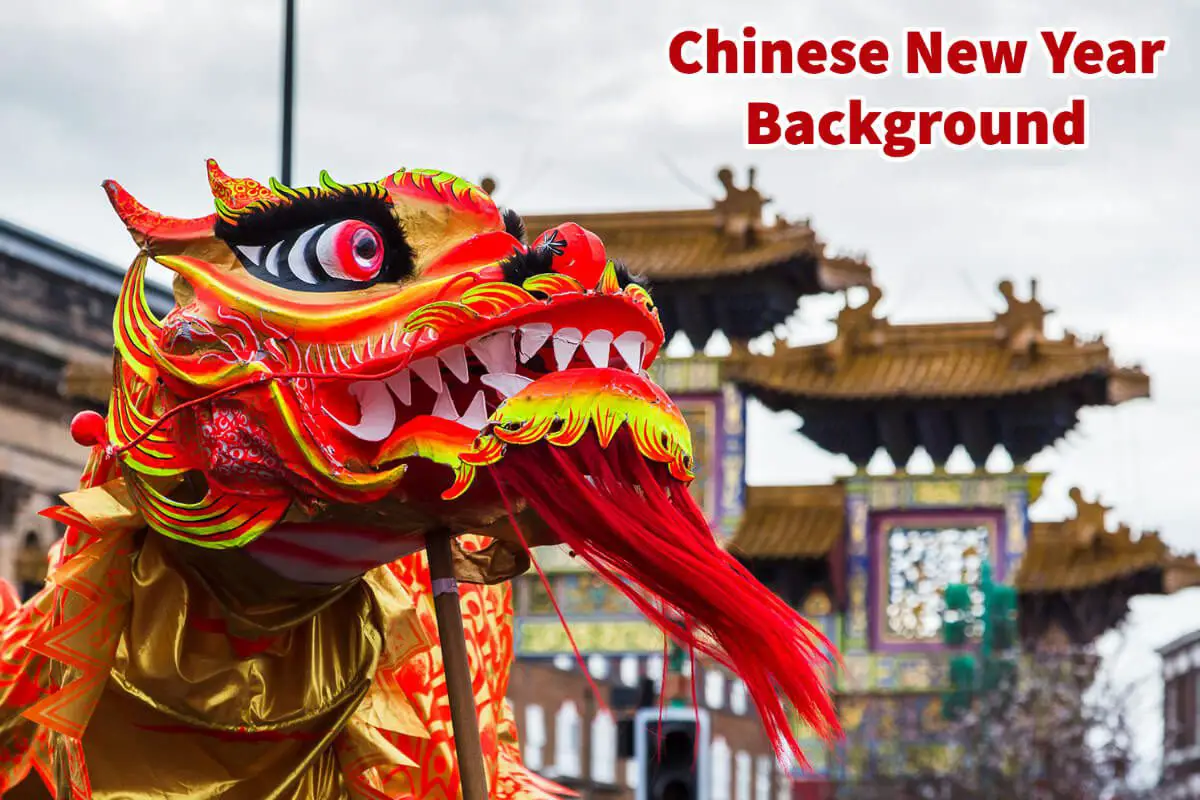If you are ever in Asia during January or February, you will quickly learn that a significant holiday is taking place, known as the Chinese New Year or the Lunar New Year. It can be challenging for many Westerners to understand precisely how vital this new year is for many in the Asian population.
The Chinese New Year is also known as the Lunar New Year or the Spring Festival. The Chinese New Year Holiday or the Lunar New Year celebrations go back over 3500 years. Like many other aspects of different Chinese festivals, this festival is filled with myths and legends.
Table of Contents
- What Is The Background Of The Chinese New Year?
- Chinese New Year Zodiac Animals
- Frequently Asked Questions
- Related Questions
What Is The Background Of The Chinese New Year?
Chinese New Year, also known as the Lunar New Year or Spring Festival, is one of China and Asia’s most important holidays and festivals. It is an essential celebration for families and friends to gather together.
The history of the Chinese New Year can be traced back at least 3500 years. Over time, the customs and practices of the Chinese New Year have changed but what has always remained the same is the importance of this yearly holiday for the Chinese and Asian people.
According to the lunar calendar, this critical holiday will change its dates yearly. These changing dates can sometimes be confusing for Westerners as, in some years, the holiday will be in January, and in other years it will be in February. The reason for this change has to do with the lunar cycle or lunar calendar.
The lunar calendar is also known as the Chinese agricultural calendar. This lunar-solar calendar identifies the years, months, and days according to the astronomical phenomenon. So this calendar is an entirely astronomical calendar, which will decide the month and the years’ dates according to the solar system.
Legend Of The Origins Of The Chinese New Year
Like many other traditional Asian holidays, the Chinese New Year Holiday is filled with stories of both myths and legends. One of the most famous legends is about to mythical monster Nian; the word Nian means year in Chinese.
The legend says that Nian ate livestock, crops, and even people on the eve of the New Year, But this monster Nian was also afraid of loud noises, bright lights, and the color red. So the people started using loud noises such as firecrackers, bright lights, and the color red to chase the monster Nian away.
Even today, the Chinese New Year celebrations in Asia are steeped with loud noises at New Year with fireworks, firecrackers, red clothes, and decorations. Young people are given money in red envelopes.
But the reason for these celebrations started with the legend Nian the monster and was used to chase him away and bring in a safe and happy New Year.
Chinese New Year’s Spring Cleaning And Good Riddance Bad Luck
Another one of the Chinese New Year traditions is thoroughly cleaning one’s home, offices, or any place else to rid one of any lingering bad luck. That is why you will find before the Chinese New Year, many people are giving their homes a very deep clean.
Other Chinese New Year Traditions
As with any holiday in Asia, the Chinese New Year or the Lunar New Year is steeped with many different traditions. Here are some of the more popular traditions or symbols that you may see during the Chinese new year:
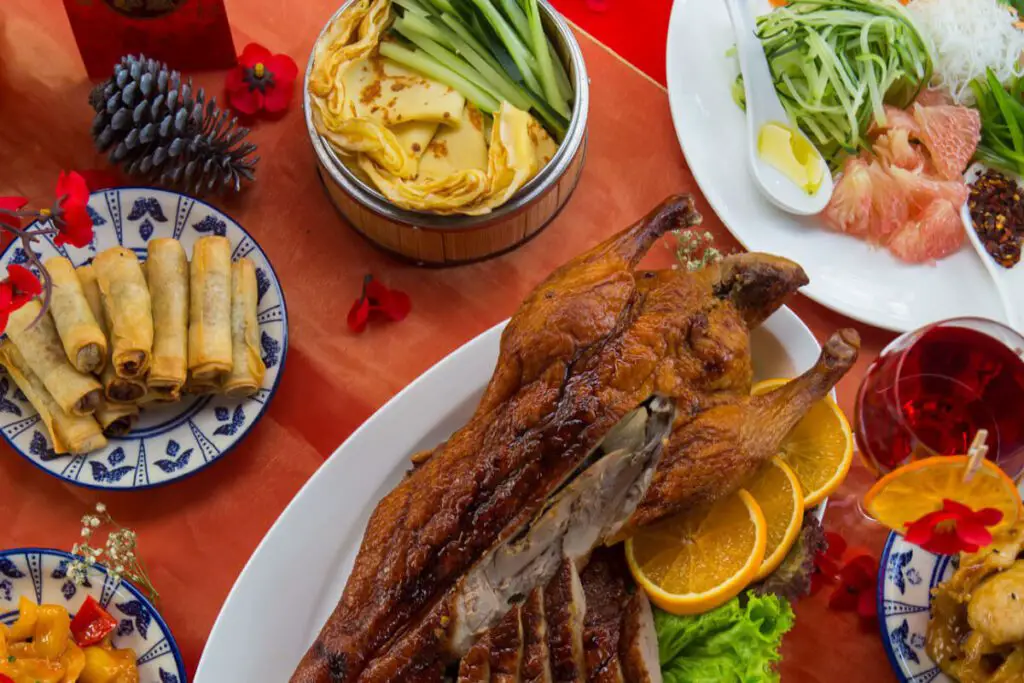
- Special Foods – Many people will prepare and enjoy special foods during the Chinese New Year. They may only eat certain foods on certain days.
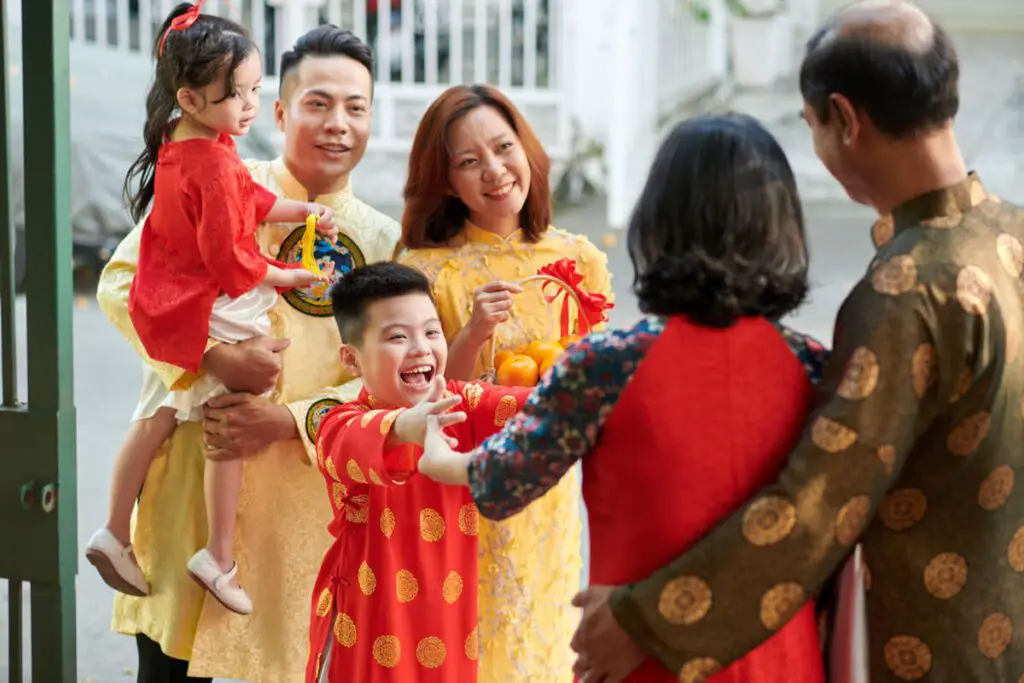
- Visitors – It is common for family members and friends to visit each other during the Lunar New Year. But for many cultures, there are also traditions associated with this. There are days when you should not visit anyone, and there are only certain days family members or friends visit.
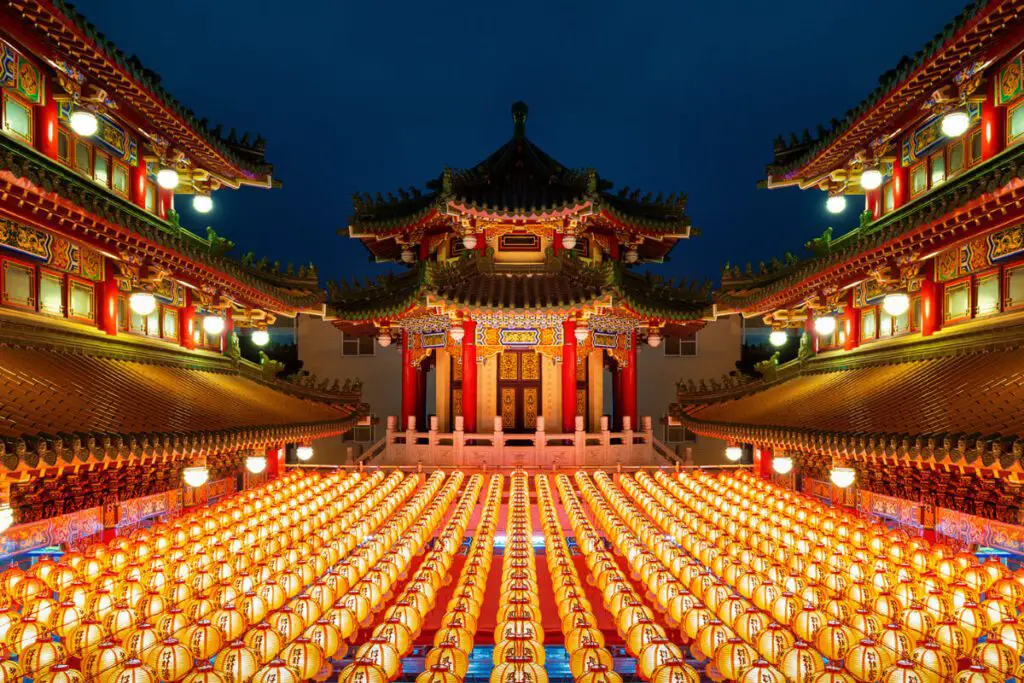
- Lantern Festival – The Lantern symbolizes the Chinese New Year time. One of the last events held during the Chinese New Year is the Lantern Festival, where people light glowing lanterns in temples and carry the lanterns during the nighttime parade.
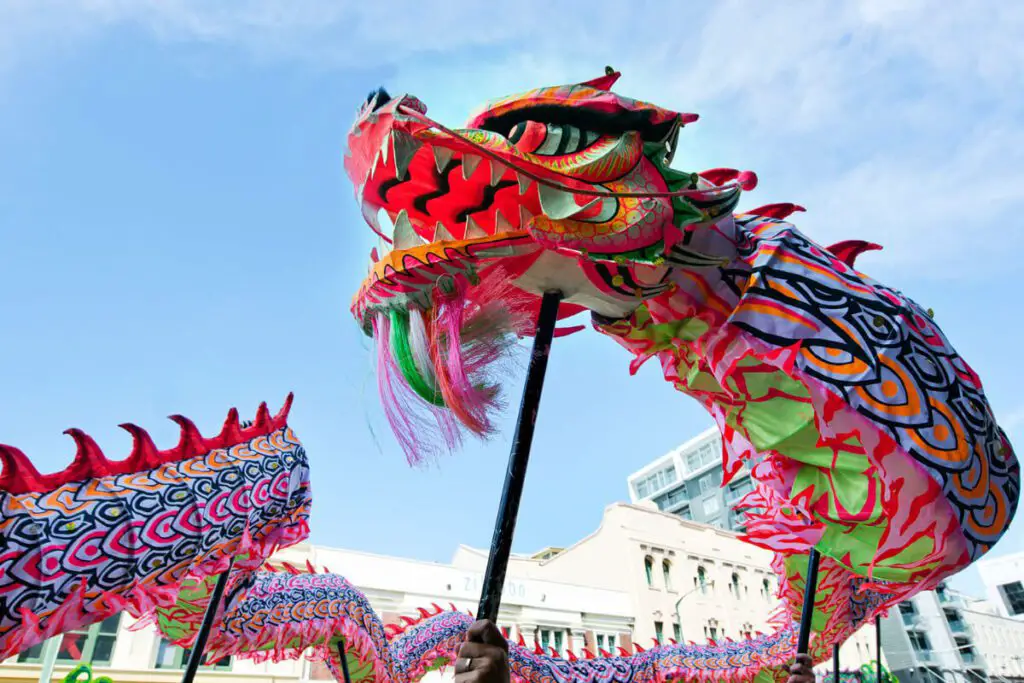
- Dragon – The dragon symbolizes Chinese good fortune, so you will often see dragon dances as a highlight of some Lunar New Year celebrations. Many of the parades feature a long, colorful dragon carried in the streets by many dancers.
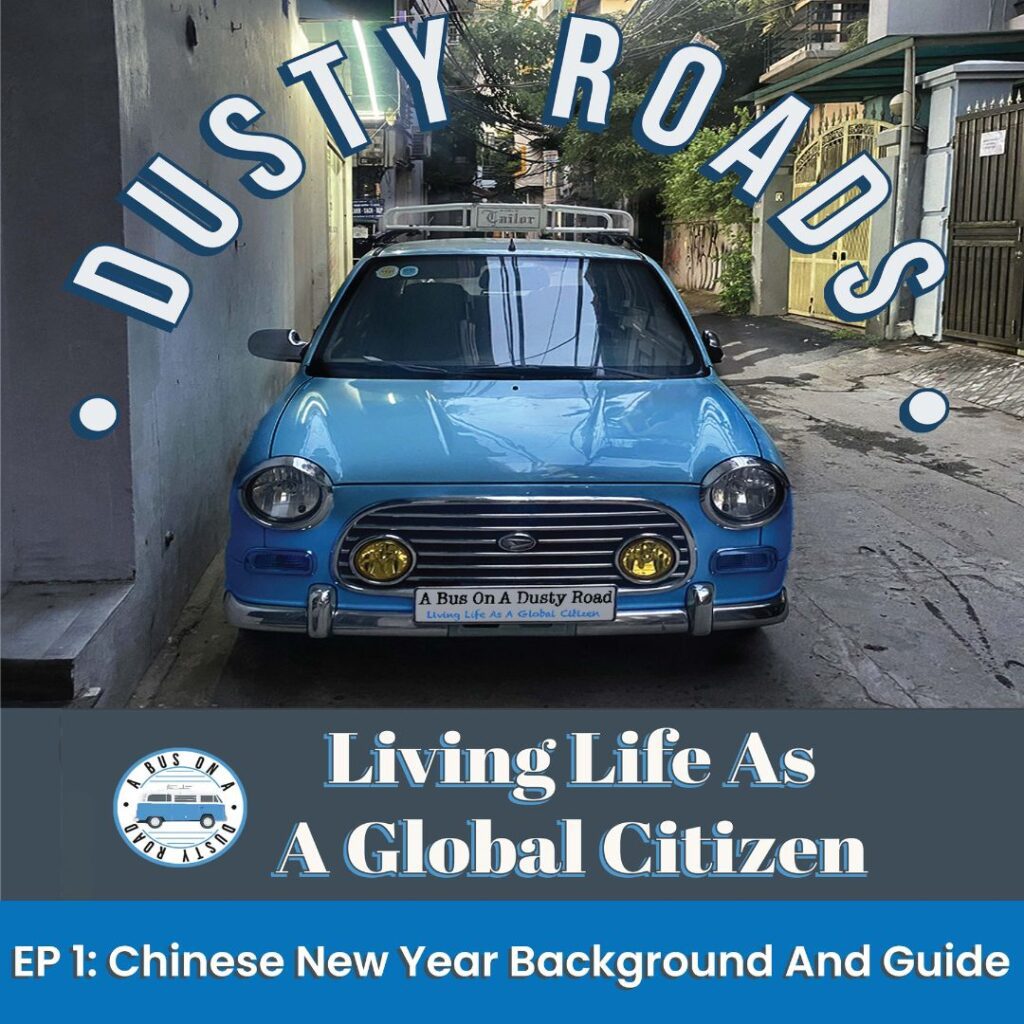
Listen To Our Podcast About the Chinese New Year Background And Guide below or by clicking here.
Chinese New Year Zodiac Animals
One of the significant parts of any New Year celebration is the beginning and the end of a Chinese zodiac animal. The Chinese zodiac has 12 animals that go in a specific order.
If you want to know what Chinese Zodiac animal you are, you can check the years to see. Remember, if you are born in January or February, the year change is the date of the New Year on the Chinese lunar calendar.
Here is a chart to show what year each animal is celebrated. If you check the year you were born, you can see what Chinese Zodiac animal sign you are:
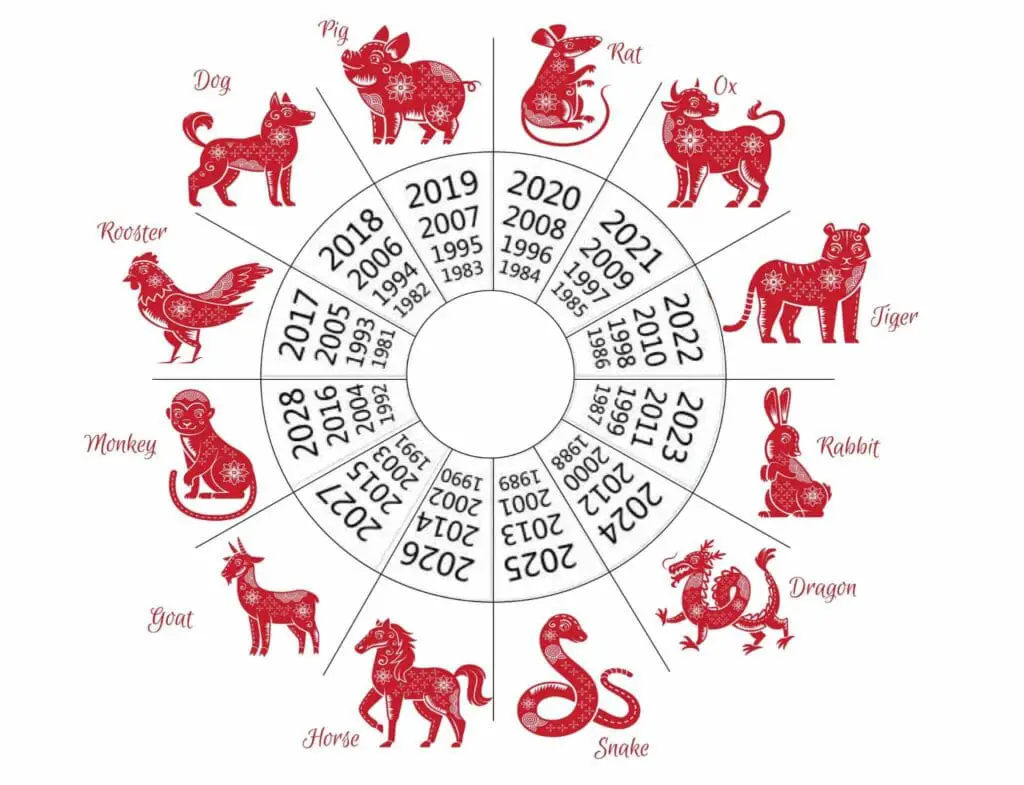
Meaning And Order Of Each Cfihinese Zodiac Animal
Here is the order of the animals and what each means. We have listed the personality trait and some lucky numbers, colors, flowers, and directions.
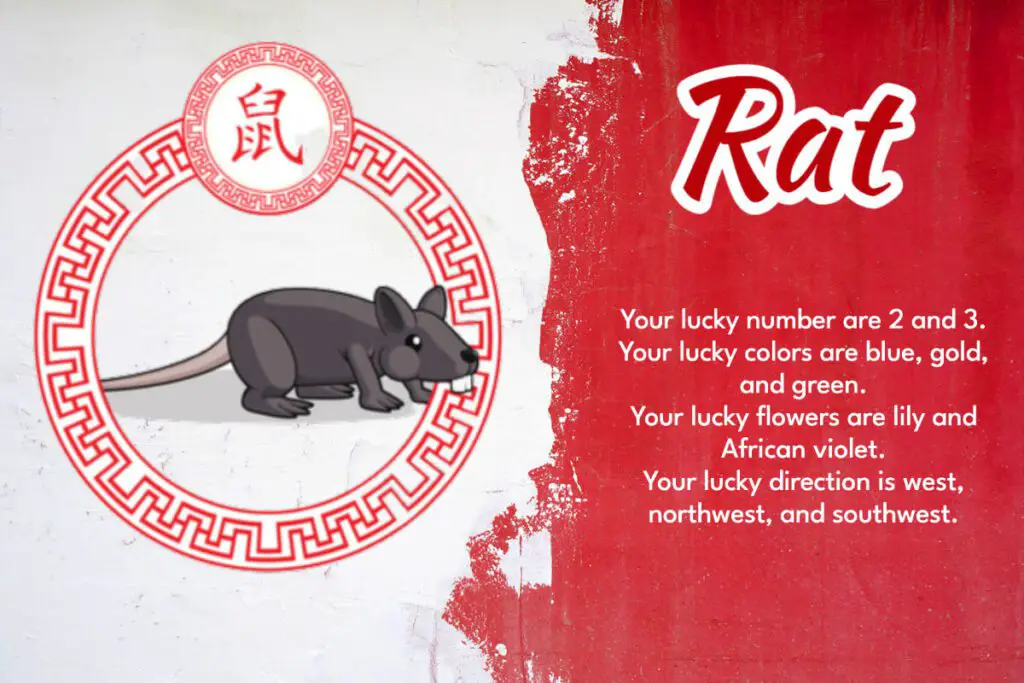
- Rat – The rabbit is the first animal in the Chinese zodiac system. It is said that people born in the year of the rabbit are considered quick-witted, resourceful, versatile, and kind.
- Your lucky number are 2 and 3.
- Your lucky colors are blue, gold, and green.
- Your lucky flowers are lily and African violet.
- Your lucky direction is west, northwest, and southwest.
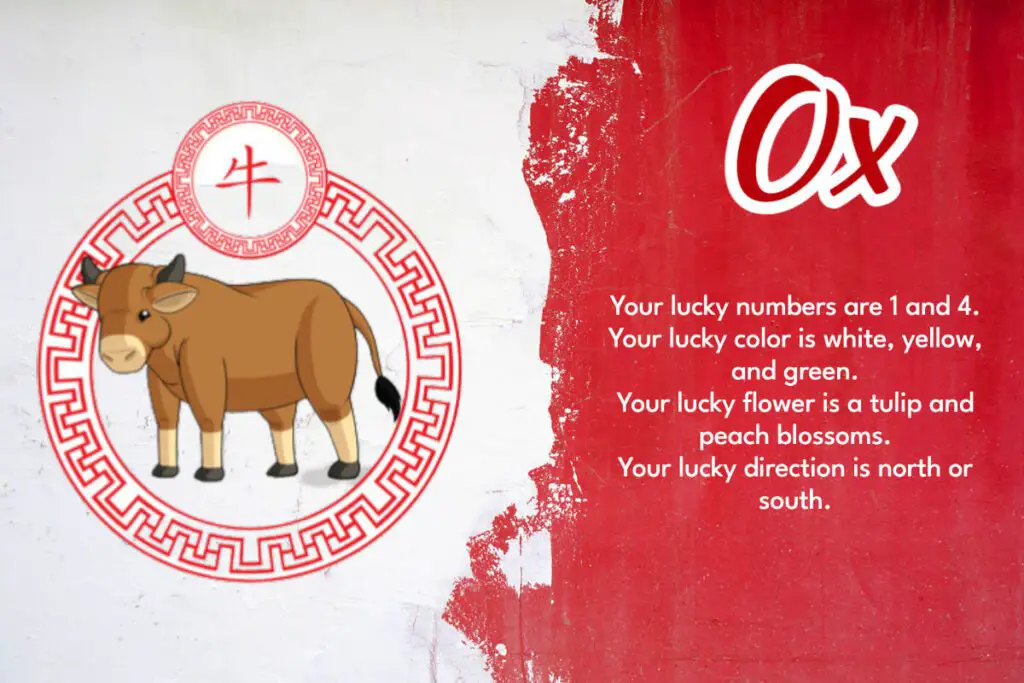
- Ox – The next animal is the ox. People born in the year of the ox are considered diligent, dependable, strong, and determined.
- Your lucky numbers are 1 and 4.
- Your lucky color is white, yellow, and green.
- Your lucky flower is a tulip and peach blossoms.
- Your lucky direction is north or south.
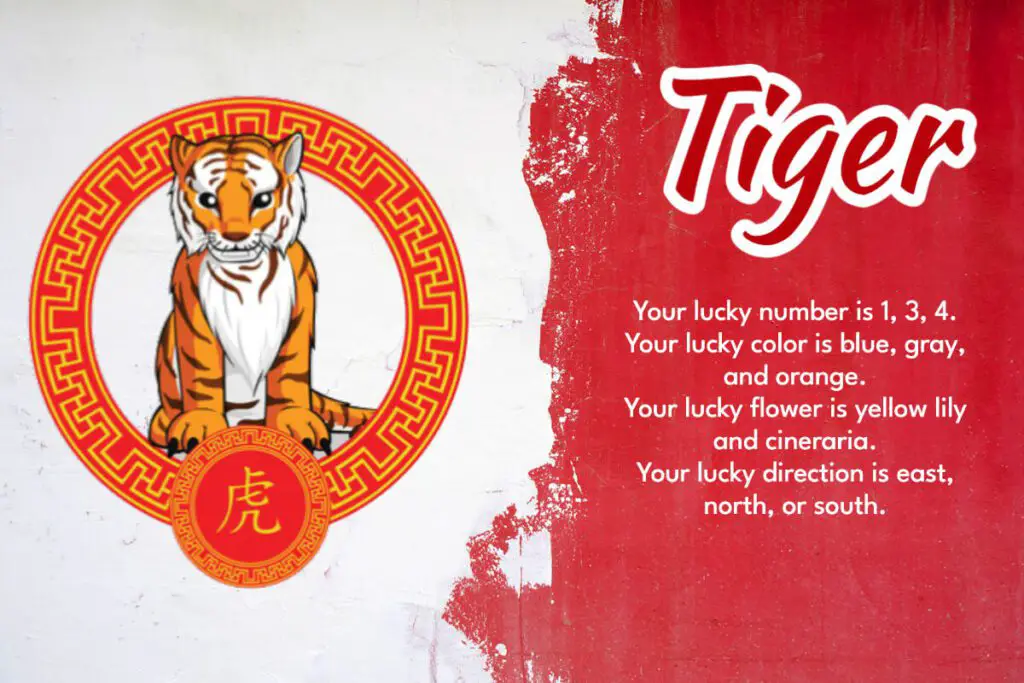
- Tiger – The Tiger is also an important animal in the Chinese zodiac system. Those who are born in the year of the Tiger are considered to be brave, confident, competitive, and unpredictable.
- Your lucky number is 1, 3, 4.
- Your lucky color is blue, gray, and orange.
- Your lucky flower is a yellow lily and cineraria.
- Your lucky direction is east, north, or south.
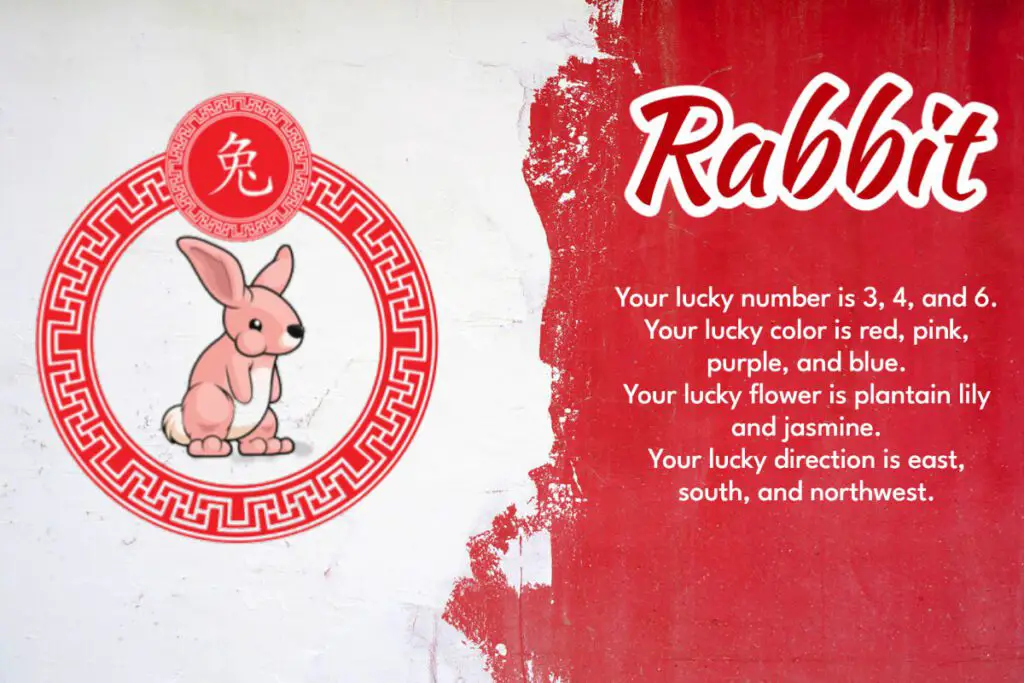
- Rabbit – Those born in the year of the rabbit are considered quiet, elegant, and kind while at the same time responsible.
- Your lucky number is 3, 4, and 6.
- Your lucky color is red, pink, purple, and blue.
- Your lucky flower is plantain lily and jasmine.
- Your lucky direction is east, south, and northwest.

- Dragon – Those born in the year of the dragon are considered confident and intellectual while simultaneously enthusiastic.
- Your lucky number is 1, 6, and 7.
- Your lucky color is gold, silver, and grayish white.
- Your lucky flower is bleeding-heart glory bower and dragon flowers.
- Your lucky direction is east, north and south.

- Snake – The people born in the year of the snake are considered enigmatic, intelligent, and wise.
- Your lucky number is 2, 8, and 9.
- Your lucky color is black, red, and yellow.
- Your lucky flower is an orchid or cactus.
- Your lucky direction is east, west, and southwest.
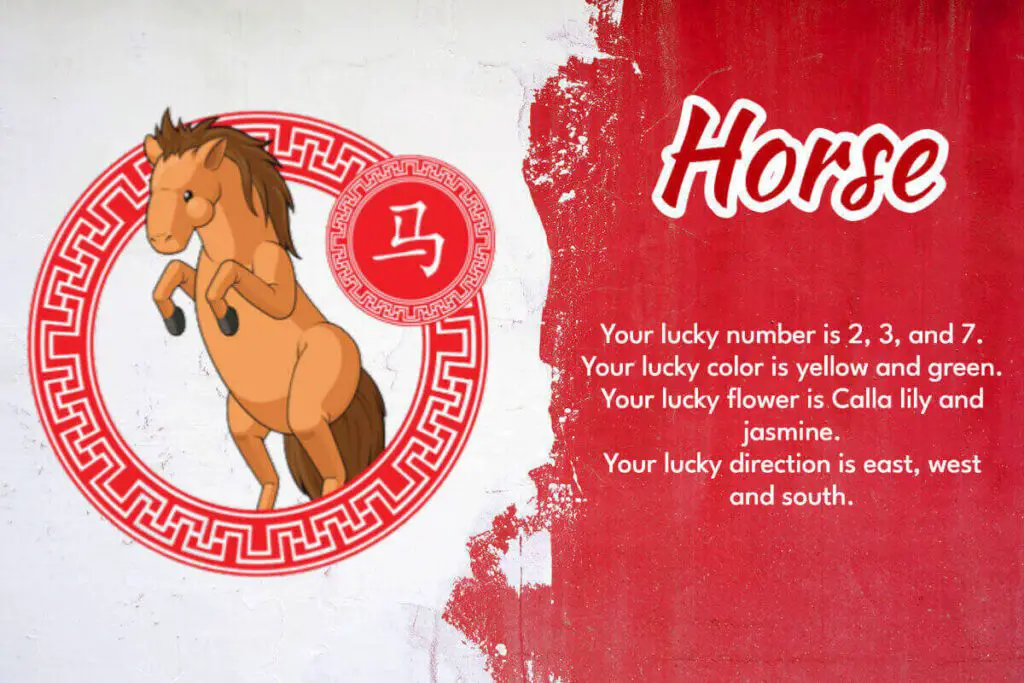
- Horse – The horse is an essential animal in China, so it also has a place in the calendar. Those born in the year of the horse are considered animated, active, and energetic.
- Your lucky number is 2, 3, and 7.
- Your lucky color is yellow and green.
- Your lucky flower is Calla lily and jasmine.
- Your lucky direction is east, west, and south.
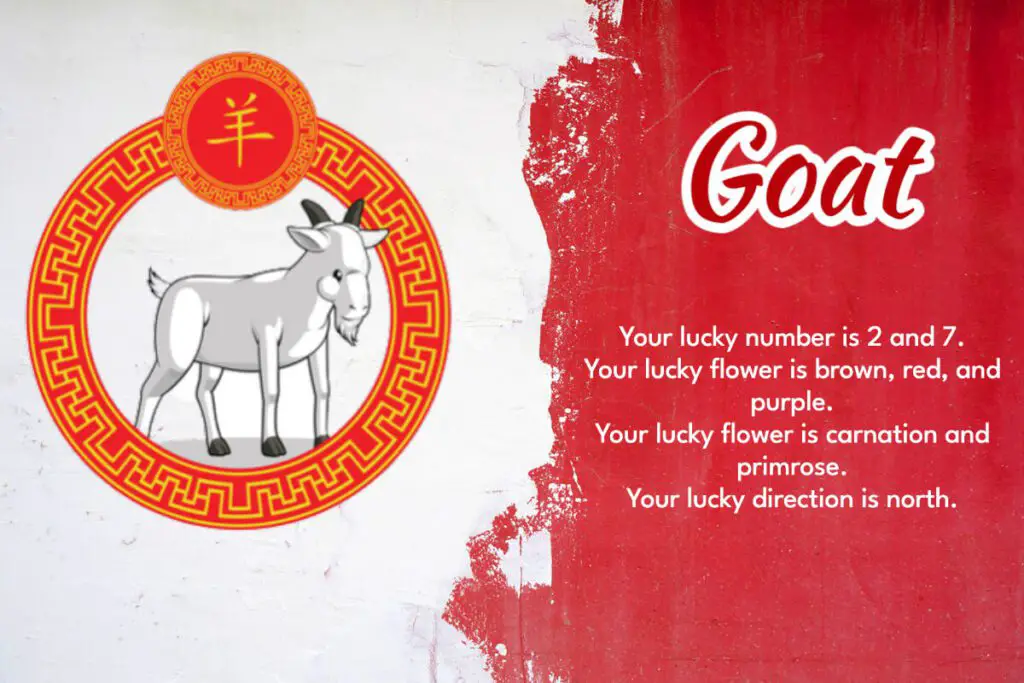
- Goat – After the horse comes to the goat and those born in the year, the goat is considered calm, gentle, and sympathetic.
- Your lucky number is 2 and 7.
- Your lucky flower is brown, red, and purple.
- Your lucky flower is carnation and primrose.
- Your lucky direction is north.
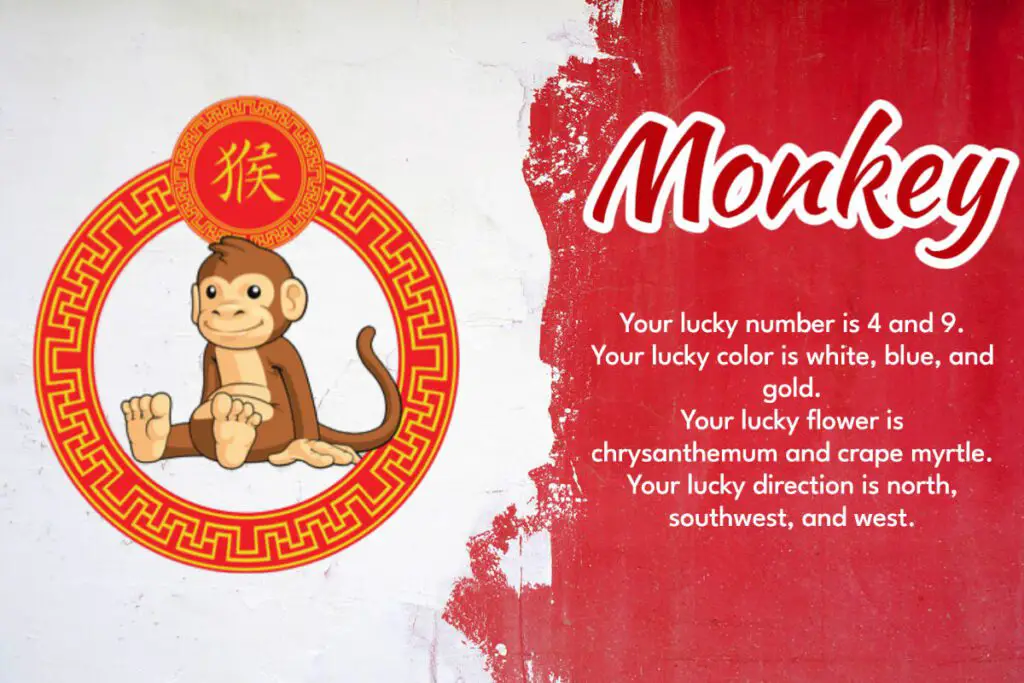
- Monkey – Those born in the year of the monkey are considered sharp, intelligent, and curious.
- Your lucky number is 4 and 9.
- Your lucky color is white, blue, and gold.
- Your lucky flower is chrysanthemum and crape myrtle.
- Your lucky direction is north, southwest, and west.
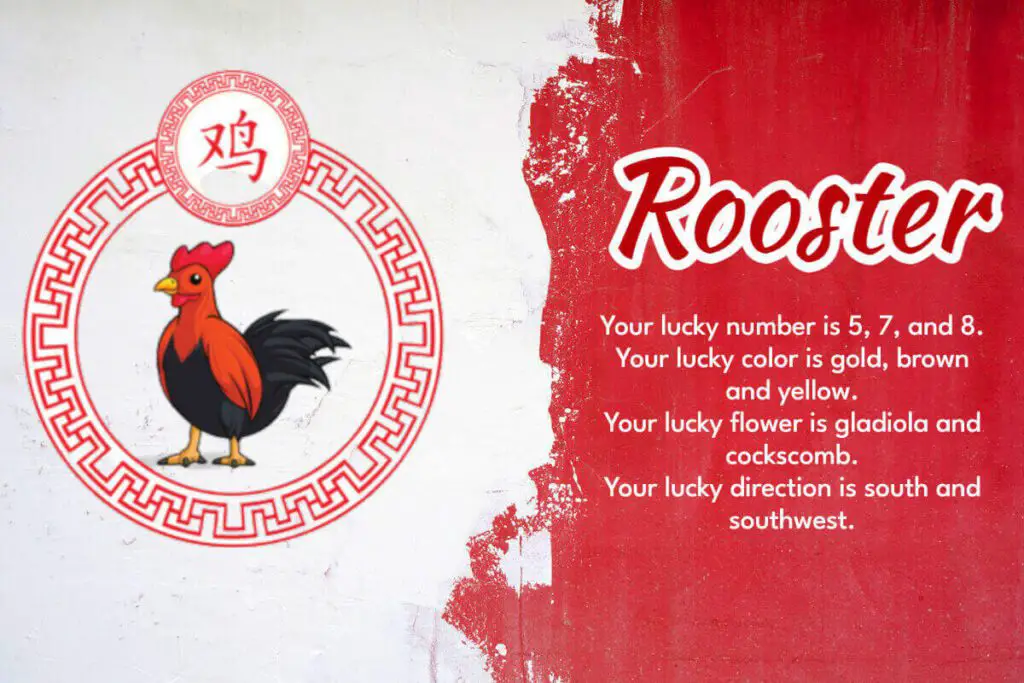
- Rooster – Those born in the year of the rooster are considered observant, hardworking, and courageous.
- Your lucky number is 5, 7, and 8.
- Your lucky color is gold, brown, and yellow.
- Your lucky flower is gladiola and cockscomb.
- Your lucky direction is south and southwest.

- Dog – Those born in the year of the dog will be lovely, honest, and prudent.
- Your lucky number is 3, 4, and 9.
- Your lucky color is red, green, and purple.
- Your lucky color is rose, cymbidium orchid.
- Your lucky direction is east, south, and northwest.
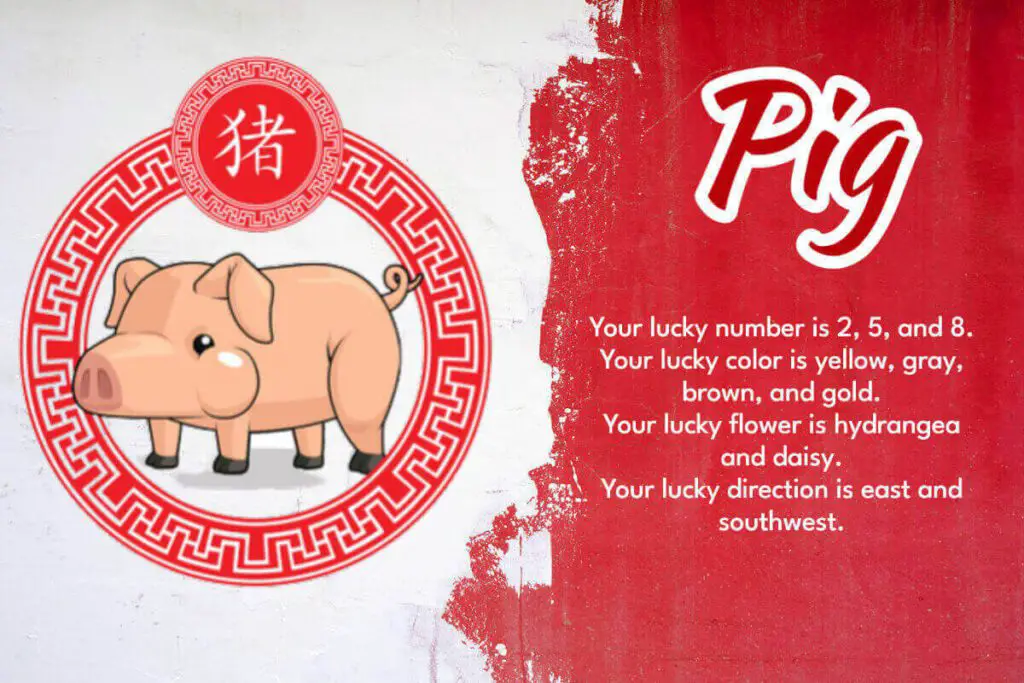
- Pig – Those born in the year of the pig will be compassionate, generous, and diligent.
- Your lucky number is 2, 5, and 8.
- Your lucky color is yellow, gray, brown, and gold.
- Your lucky flower is hydrangea and daisy.
- Your lucky direction is east and southwest.
Like so many things in Asia, the Chinese New Year or the Lunar New Year holiday is steeped in tradition and history. Understanding the holiday background helps you understand the symbols, colors, and other things used in the celebration.
At A Bus On A Dusty Road, we talk about history, travel, life, sailing, and ex-pat living. We are all about “Living Life As A Global Citizen.” We explore social, cultural, and economic issues and travel.
We would love to have you be part of our community. Sign up for our newsletter to keep up-to-date by clicking here. If you have any questions, you can contact me, Anita, by clicking here.
Listen to our Podcast called Dusty Roads. You can find it on all major podcast platforms. Try out listening to one of our podcasts by clicking here.
Subscribe to our A Bus On A Dusty Road YouTube Channel filled with great videos and information by clicking here.
Frequently Asked Questions
1. What is the significance of the Chinese New Year?
The Chinese New Year, also known as the Lunar New Year or Spring Festival, holds immense cultural and historical importance. It marks the beginning of the lunar calendar and is a time for family reunions, honoring ancestors, and welcoming the arrival of spring.
2. How long has the Chinese New Year been celebrated?
The celebration of the Chinese New Year has a rich history spanning over 3500 years. It has evolved over time, incorporating various traditions, customs, and cultural practices that reflect the diversity of the regions where it is celebrated.
3. Why is it called the Spring Festival?
The Chinese New Year is often referred to as the Spring Festival because it marks the end of winter and the beginning of spring. It symbolizes renewal, growth, and the promise of new beginnings.
4. What are the key traditions associated with the Chinese New Year?
Traditional customs include family gatherings, feasting on special foods, giving and receiving red envelopes (hongbao), dragon and lion dances, fireworks, and the display of auspicious decorations to bring good luck and fortune.
5. How is the Chinese zodiac linked to the New Year?
The Chinese New Year is associated with one of the 12 animals in the Chinese zodiac, each representing a year in a 12-year cycle. 2022, for instance, is the Year of the Tiger. People born in that year are believed to share characteristics with the tiger.
6. What role do myths and legends play in Chinese New Year celebrations?
Chinese New Year is rich in myths and legends, such as the story of Nian, a mythical beast terrorizing villages until it was scared away by loud noises and the color red. These tales contribute to the cultural fabric of the festival.
7. How do families prepare for and celebrate Chinese New Year?
Preparations involve thorough cleaning of homes to sweep away bad luck, buying new clothes, and preparing special festive foods. Families gather for a reunion dinner on New Year’s Eve, sharing symbolic dishes with deep cultural meanings.
8. Why is the color red so prominent during Chinese New Year?
Red is considered an auspicious color in Chinese culture, symbolizing good luck and warding off evil spirits. During the New Year, you’ll find red decorations, clothing, and the giving of red envelopes as a gesture of good fortune.
9. How do people wish each other during the Chinese New Year?
Common greetings include “Gong Xi Fa Cai” (Wishing you prosperity) and “Xin Nian Kuai Le” (Happy New Year). These greetings are often accompanied by well-wishes for health, happiness, and success in the coming year.
10. How long does the Chinese New Year celebration last?
The Chinese New Year celebration typically lasts for 15 days, from New Year’s Eve to the Lantern Festival. Each day has its own significance, and the entire period is filled with various activities, ceremonies, and traditions. The Lantern Festival, on the 15th day, marks the end of the celebrations with lantern displays and other festivities.
Related Questions
11 Things China And Vietnam Have In Common
China and Vietnam are Asian countries with many similarities in their culture, traditions, and language. Both are patriarchal societies that believe in ancestor worship. Many of their shared traditions include many traditional holiday celebrations. Their government systems are similar.
By clicking here, you can discover 11 Things China And Vietnam Have In Common.
Where Is The Ching Ming (Qing Ming) Festival Celebrated? All About
The Ching Ming (Qing Ming) festival is celebrated in most parts of Asia, especially in any country with a sizeable Chinese community. Not all countries will celebrate this cultural festival as a public holiday. Still, in many parts of Asia, you will find people taking time off work as they need to go with their families to their family gravesites.
By clicking here, you can discover Where Is The Ching Ming (Qing Ming) Festival Celebrated? All About
What Was The Main Religion in Cambodia Before Buddhism?
Before Buddhism was so prevalent in Cambodia, the main religion was Hinduism. Hinduism has been the state religion of Cambodia for over 1000 years. The Angkor Wat temple complex in Siem Reap, Cambodia, was initially built as a Hindu temple.
You can learn more by reading What Was The Main Religion in Cambodia Before Buddhism? by clicking here.

